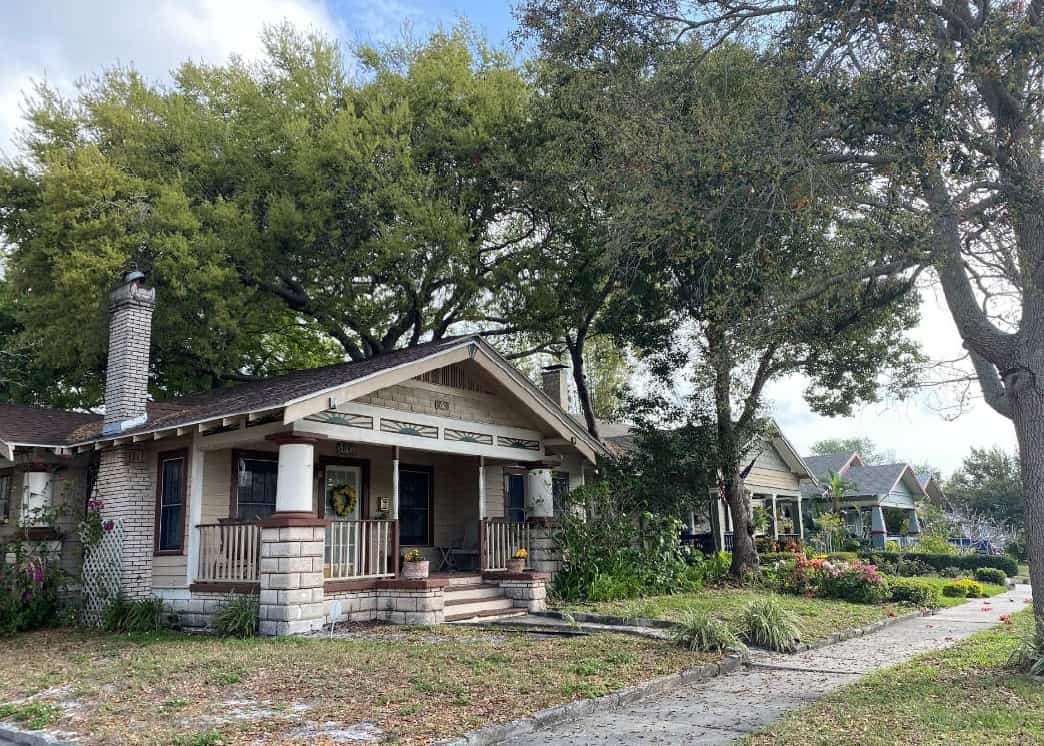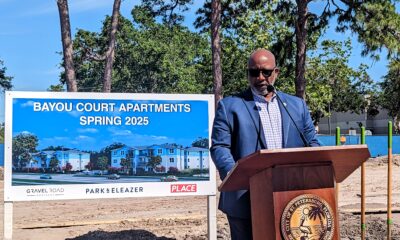Thrive
City favors adding housing density in neighborhoods

As residents approached the podium inside the council’s chambers Thursday, sharing opposing perspectives on a zoning amendment that would allow quadruplexes on certain lots, changing the makeup of single-family neighborhoods, the St. Petersburg City Council ultimately decided to move forward with a second hearing.
The language in the first reading of the city-initiated Neighborhood Traditional Mixed Residential (NTM-1) zoning application calls for an increase in the building density, allowing up to four units on nearly 3,000 parcels across the city. The zoning would also present an opportunity to build more affordable housing – a dire need officials are addressing.
“When we think about what major impact is, I’d like to consider not who is impacted the most, but how we could do the most for those who are impacted,” Councilwoman Deborah Figgs-Sanders said.
“We all say we support affordable housing – just not in our neighborhood. We need this type of housing everywhere,” Councilwoman Gina Driscoll added after hearing neighborhood association members and others said they acknowledge the need, but view it as a conflict, potentially jeopardizing their neighborhood’s character. However, the proposed zoning change does list specific requirements related to the parking, setbacks, alleyways, facades and roads.
The passing of the first reading follows the recent St. Petersburg Development Review Commission approval to allow a missing middle housing density bonus for lots abutting a major street.
While city council passed the first reading, there was some hesitation.
“I’m very skeptical about moving forward on this NTM-1 zoning and some of the effects it’s going to have on some of our neighborhoods, especially when we have this capacity to build in other areas of our city,” Councilmember Ed Montanari said. Some of the opposing public speakers had a similar perspective, stating there are other areas or “dirt lots” within the city that could be considered for the NTM-1 zoning. They also argued that an additional density would be “forcing those neighborhoods to change” and cause more vehicular traffic.
“With the NTM zoning map change for our neighborhood in particular, we understand there’s a need for housing options in our city and we do already feel we have strategies that are successful. Historic neighborhoods were the model for type of mixed use,” said Alexis Baum, president of the Historic Kenwood Association, noting there are ADUs (accessory dwelling units), multifamily housing and options for economic diversity, stating there isn’t a need at this time for the change.
“We believe this will have minimal impact when you look at the numbers of the overall goal of the rezoning, and will reduce the effort of protecting the value of the historical character of our city,” Baum said.
Business people and organization leaders at Preserve the ‘Burg were among the flood of people at the podium speaking in favor of the zoning change, explaining it serves the greater need of helping residents stay in the city.
“A third of Pinellas County families are spending more than 40% of their income on housing. Our teachers, first responders and nurses are driving from hours away to get to their jobs. Our desperate housing shortage is a combination of decades of underbuilding and a huge influx of new residents that want to make St. Pete their home,” said Mack Feldman (of Feldman Equities), a board member of YIMBY, a nonpartisan coalition of zoning and regulatory reform advocates.
“Big apartment buildings downtown cannot be the only answer for young families. Progressives that would normally welcome new neighbors become zero-sum xenophobes that would rather build a zoning wall around their neighborhood than accept change. Conservatives that otherwise champion property rights demand that government use the threat of force to ban new homes. NTM-1 is a modest step that was designed to appeal to everyone – it advances housing equity and property rights,” Feldman continued.
Anthony Close, owner of urban development blog St. Pete Rising and a renter in the city, said, “It [the zoning] bridges the gap between our single-family neighborhoods and downtown in our urban neighborhoods. This has been in discussion for seven years; it shouldn’t be blindsiding anyone … The very limited NTM-1 (zoning) is not going to fix our housing problems, but it’s a start and impacts less than 3% of lots across the city and is only on major corridors.”
The second reading is scheduled for March 23, when the potential amendments to the language will be discussed.








Tim
March 6, 2023at6:46 pm
Why don’t we bulldoze the whole county and just build one giant 50 story high rise so every butthead who wants to be here can
Ryan
March 5, 2023at10:19 am
How about NO? Florida is Full. Who benefits from the over crowded streets, neighborhoods, beaches, the traffic? St Pete has been too crowded for a decade and now they want this? It’s asinine. If you didn’t make the trek to Florida already, we’ll you’re just gonna have to wait until there’s space for you.
monah
March 5, 2023at10:17 am
Laura, my understanding is that the definition is a road with a minimum of two-lanes per way, and the facing lot has to be on an alley. Central Ave, and 1st Avenues North and South are examples that fit this definition.
Laura
March 4, 2023at8:02 pm
What is the definition of a future major street and how is that decided? It would seem as though they could put that label on almost any street they want to.
Georgia Earp
March 4, 2023at5:53 pm
By the way, thank you for reporting about thiz issue.
Georgia Earp
March 4, 2023at5:53 pm
I think added density for affordable housing is a admirable goal; however, it is my understanding that there is no requirement that the additional units permitted in the proposed amendment are affordable. Why don’t the developers add affordable units to the luxury towers going up all over the City.
Mike
March 3, 2023at4:40 pm
Because to he33 with residents and home owners.